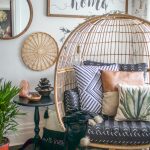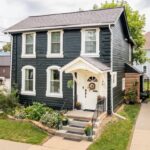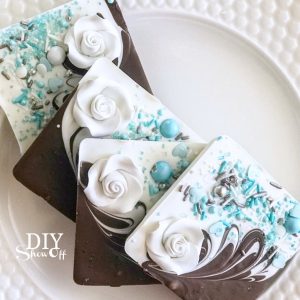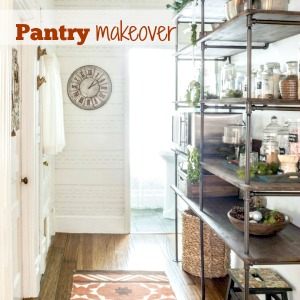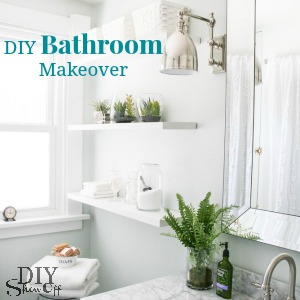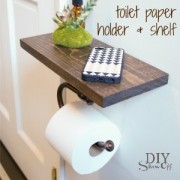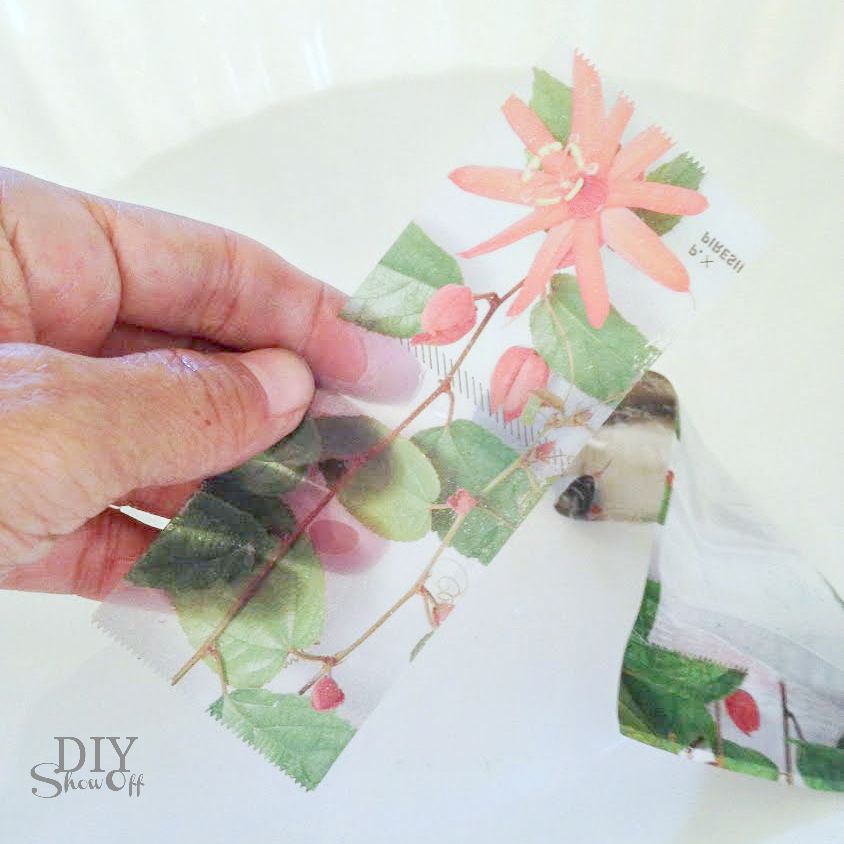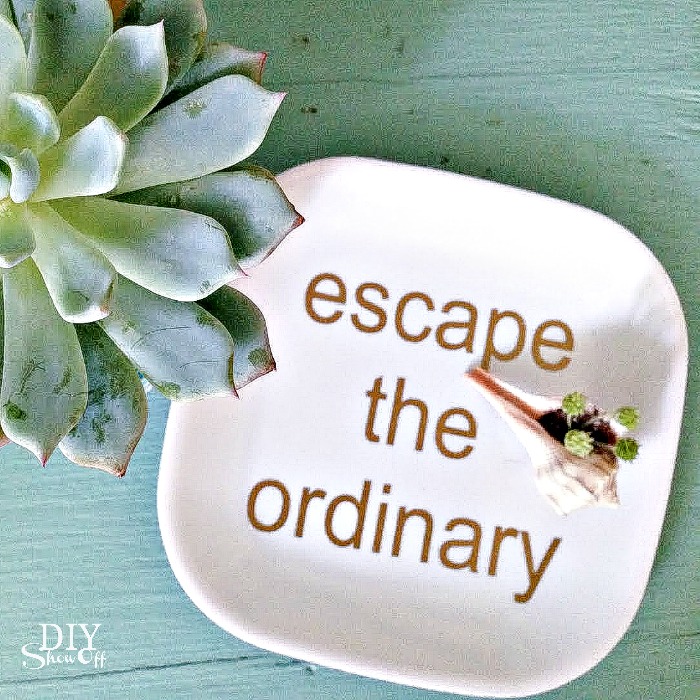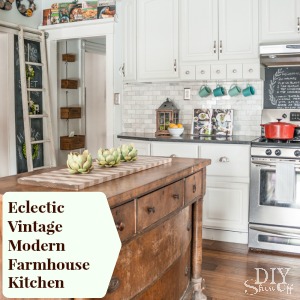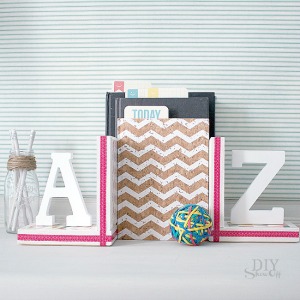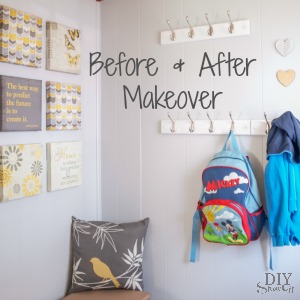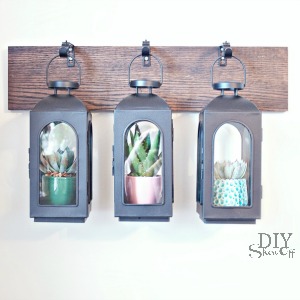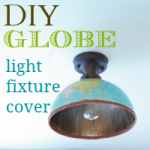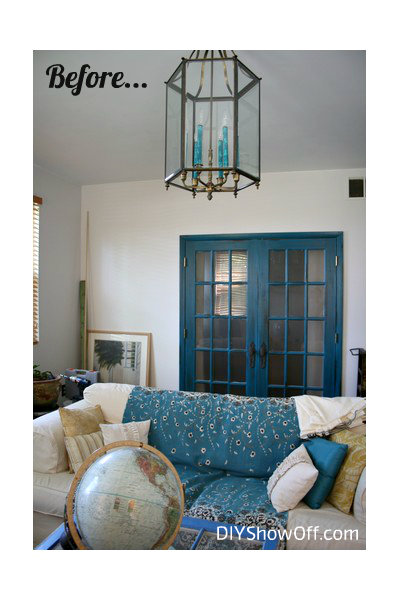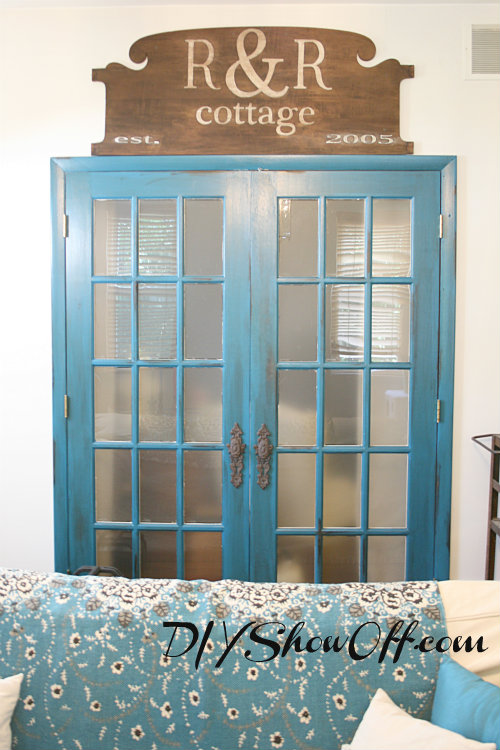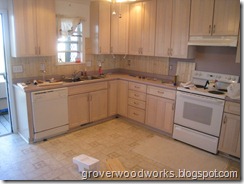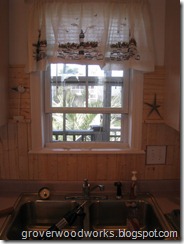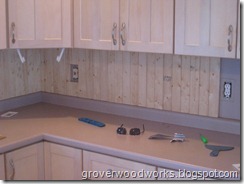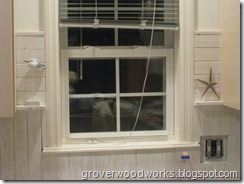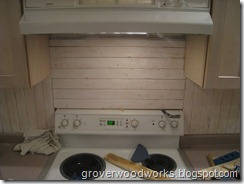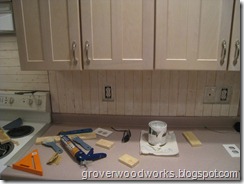The old baseboards in the family room were 2 inches tall and lacked the character displayed in the rest of our home. The family room was a later addition to the house. After the bamboo floor was installed, we decided to go with a taller baseboard. I chose 6 x 1 inch pine.
Before…

I started to the left of the French doors, measured and cut my board to fit the space. I do not miter baseboards. When you see the finished job, I promise you no one is going to notice that the joints/corners are not mitered.
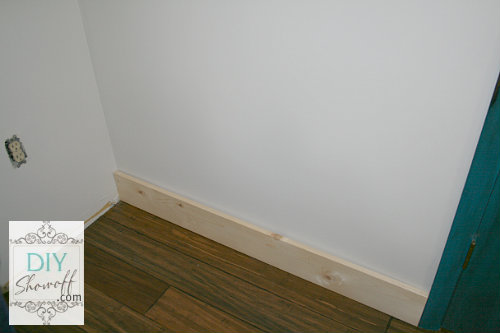
I moved along, placing my next un-cut 8 foot piece into place from the corner.

Moving along to my third piece, I butted it up against the far wall to where it meets the second un-cut piece placed and draw a line where the two boards meet. This is where I’ll cut.
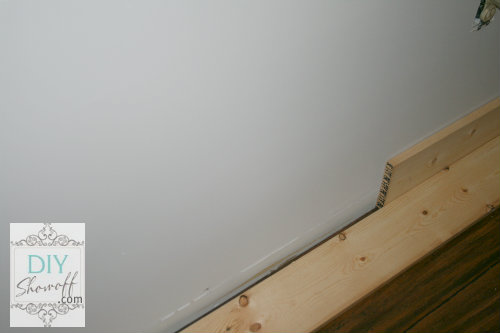
So simple. I cut all of my pieces and ‘framed’ the room. {pardon the old hunter green furniture}
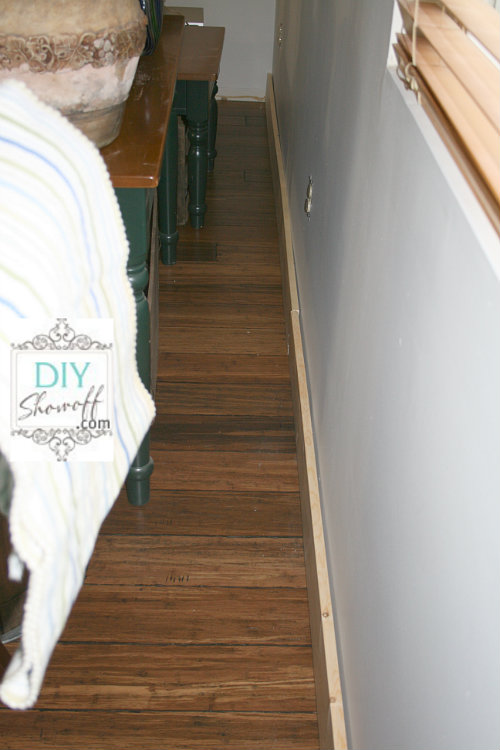
Starting with “A”, I label each board so I know the order they are to be placed around the room. I got up to “K” I think. You can mark the wall too, but just having the boards in order and knowing where you start works.
Next I hauled the boards to the basement and gave each piece of baseboard two coats of paint {Benjamin Moore Chantilly Lace in a semi-gloss finish) on three sides.
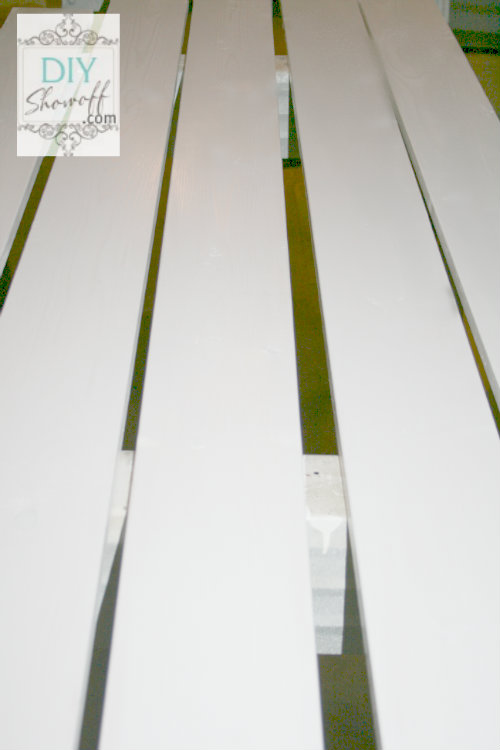
My Porter Cable nail gun/compressor makes installing baseboards super easy.
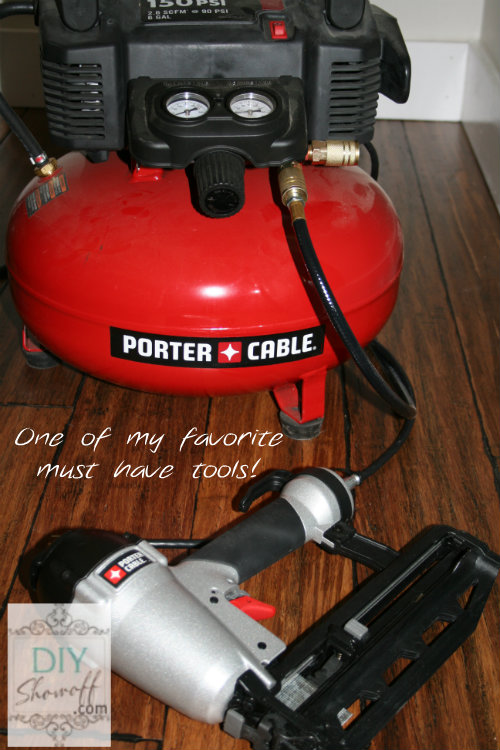
I just a nail every 14 inches near the bottom of the boards and a staggering nail near the top in between the bottom nails.
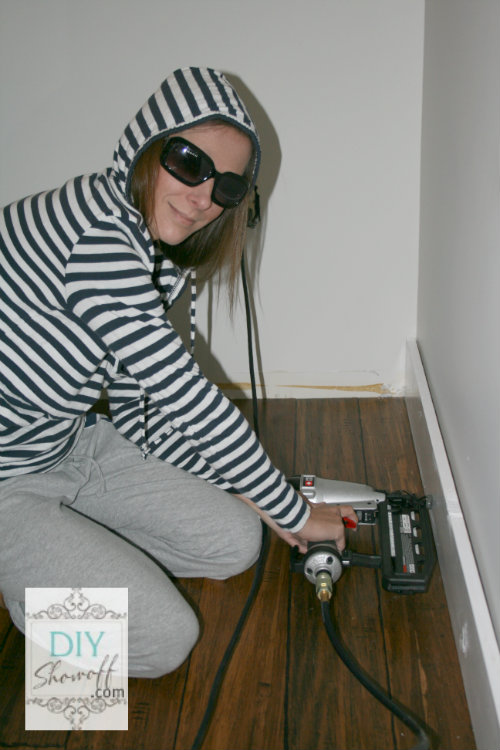
{bad hair day = hood for pics and if you misplace safety goggles, sunglasses are the next best thing}
Our walls are not plumb. There are gaps where the baseboards gap and don’t sit flush against the wall. But that’s okay.
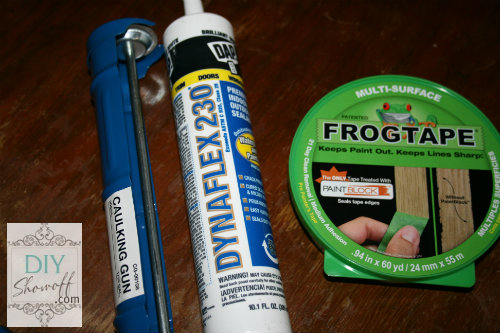
Enter: DAP DynaFlex. DynaFlex is DAP’s most advanced indoor/outdoor premium latex sealant with technology that is both waterproof and paintable. It combines outstanding durability, adhesion and flexibility with easy tooling, paintability, and low odor, while also keeping insects (SPIDERS!) from entering through small gaps and cracks. It is mold and mildew resistant, making DynaFlex ideal for a wide variety of projects such as sealing around windows, doors, siding, trim, molding and baseboards.
I usually leave caulking to Mr. DIY but this time I did it myself. We’ve been really busy with real life things, so this is a task I kept putting off thinking it would be more difficult and take more time than it did. I was wrong! Caulking is the easiest DIY job I’ve ever done. And it took only about an hour.
Seriously the hardest part was learning how to load the caulk gun. Cut the caulk tube on an angle creating a small hole. And insert the tube into the gun.

Handle up means “on”. Handle down means off.
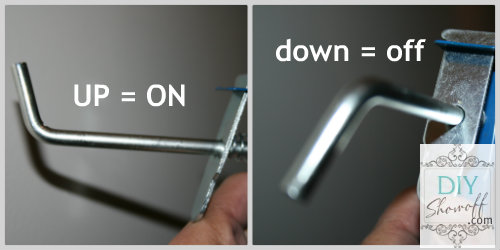
Turn the tip of the tube so the flat side of the angled cut will rest in the ‘crack’ where baseboard meets wall.
Turn handle up to “on” (work quickly with a full tube – it pushes itself out!) and push the metal tab to start placing a bead of caulk in where the baseboard meets the wall, move along. Push. Release. Push. to maintain a steady bead. I worked in 4 foot sections. (Tip: With a new tube, be QUICK with turning the gun off an on – it will continue to squeeze out when you aren’t looking!) Remember to turn handle to ‘off’ position when you set down the caulk. As the tube empties, it will require more gripping muscle.
I had a small dish of water, a small waste basket and lots of paper towels on hand.
Dip finger into water and smooth out the bead of caulk (paper towels or rags are necessary). If it gets onto something it shouldn’t, it’s okay. It wipes/washes right off.
It created a beautiful straight flat bead filling in the gap between the wall and baseboard.
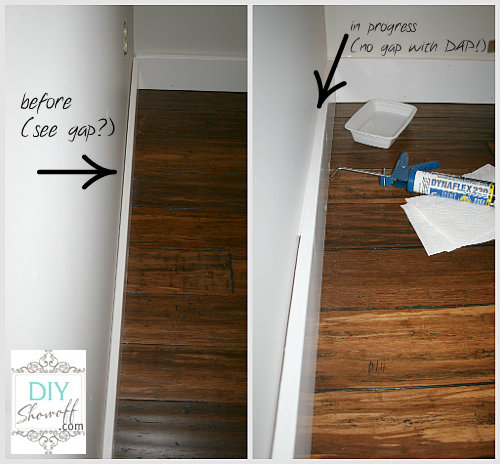
At first I even lined the top of the baseboard and the wall where it meets the baseboard with Frog tape to create a straighter line.
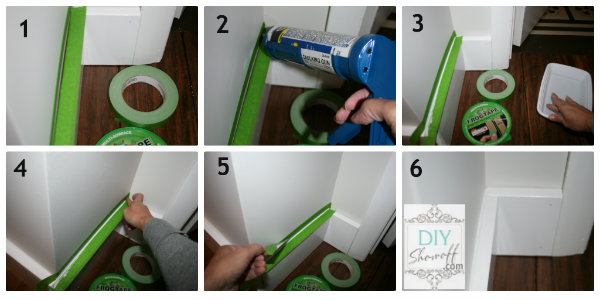
But found that the extra step wasn’t really necessary. It might be helpful if you had a big contrast between baseboards and walls. But if I made a mess or an ‘oops’, DynaFlex was easy to wipe away/clean when wet.
before

then…{better but yikes!}
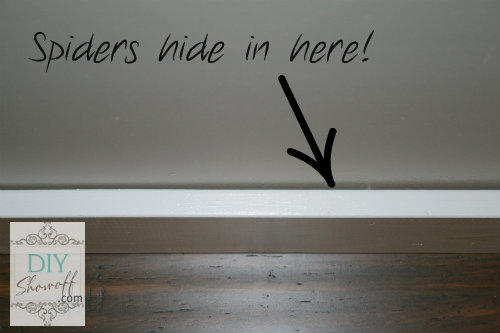
now…

Family room still in progress but these small details are important. DAP Dyna Flex is sandable and paintable! It’s tempting to end at this step because it looks good enough, but painting will help seal everything and give it a uniform look. Next up filling the nail holes, light sanding and paint touch up. What do you think? An easy enough project to do on my own.
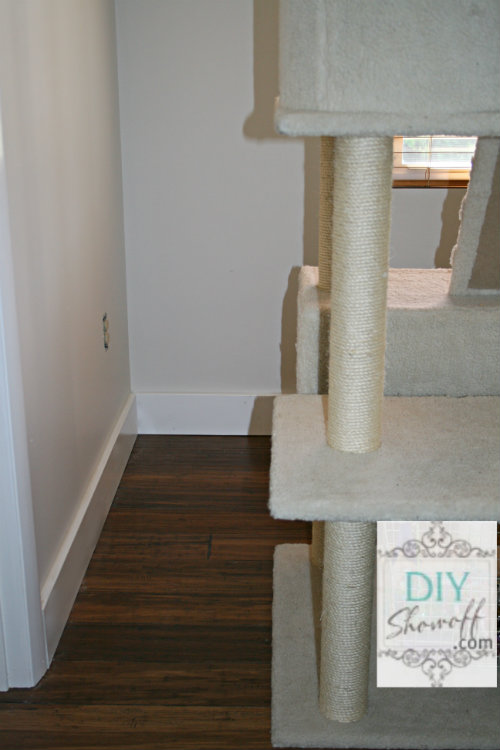
Cost: approx. $100 for wood and caulk (less than two tubes) for an approx. 200 sq. foot room.
This post is sponsored by DAP but opinion, photos and tutorial are my own.






